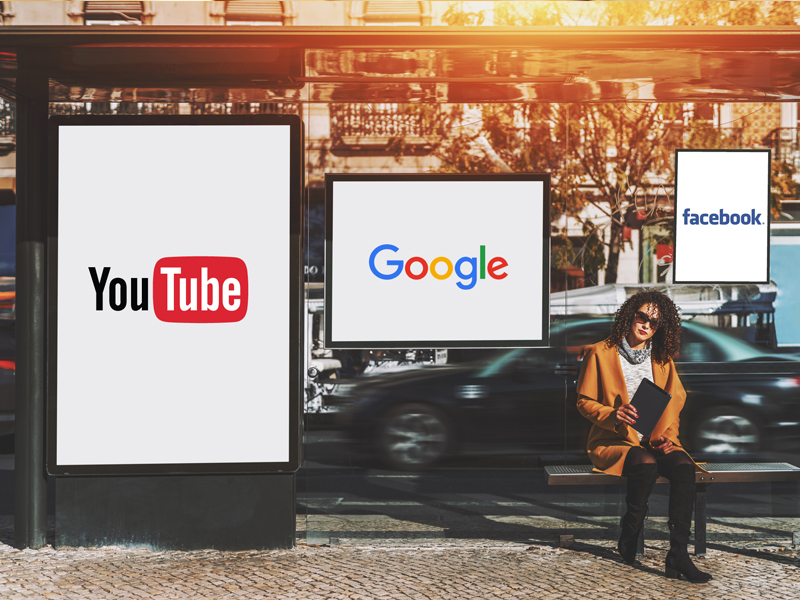By Tahir Nisar
A digital advertising campaign may be stymied by the difficulty in attributing the value of online investment to various online channels such as display ads, paid search to social media and email. The article considers attribution models that can be applied to assign sales credit to these and other online channels.
In a recent speech to the US Internet Advertising Bureau, Marc Pritchard of Procter & Gamble, who controls an annual ad budget of $7.2 billion as its Marketing Director, suggested that there is a crisis of trust facing the digital advertising industry. He contended that the industry still does not have common standards to measure online audiences and viewing times. In contrast, traditional media such as TV and newspapers can be trusted more on these counts (e.g. viewing times and readership).
Advertisers and marketers have become dissatisfied with advertising on the Internet for many reasons. The sheer number of adverts has led to consumers simply ignoring many, leaving advertisers and marketers with little to show for their efforts. There are a number of differences between internet advert avoidance and traditional advertising; the internet can often be used more as a tool than an entertainment device, unlike a television, and, therefore, users avoid adverts as they may have a limited time to carry out the task at hand. Furthermore, there are ill-effects on the reputation of Internet adverts in the context of web page loading times, users want to access the data they are looking for quickly and do not want to be hindered by adverts taking time to load. Manchanda et al (2006) examine the effect of banner ads on Internet purchasing in their research article.1 One of the first major findings that they make is that all other things being equal exposure to banner advertising does have a significant positive effect on current consumers’ propensity to purchase a product. That is to say, consumers’ that are currently using a company or brand are positively influenced by seeing banner adverts for that brand or company. What’s more, they argue that focussing on click-through rates may be the wrong gauge for managers to use as their research shows that simple exposure to a banner advert will increase the likelihood of a current consumer engaging in repeat purchasing, and the fact that they haven’t clicked the advert does not mean that they haven’t been influenced by it. The final outcome they raise from the research conducted is that consumers respond more favourably to fewer more consistent banner designs over multiple different pages rather than a large quantity of differing adverts on a smaller number of pages. It is likely that high-involvement products that the consumers only purchase after long careful consideration, such as a car or van, gain the best results via click-through responses to advertising, conversely low-involvement products have been found to benefit more from a high impression rate, or a high number of consumers simply viewing the advert.
[ms-protect-content id=”5662″]In a purchase funnel, a consumer may interact with an assortment of media platforms ranging from paid search and organic search to social media and email. Exhibit 1 depicts how a consumer may rely on display ad as a sole information outlet when making a purchase decision (Sales Funnel 1). Alternatively, he or she may use several other media channels including search, social media and price comparison (Sales Funnel 2). For many companies, digital advertising has thus become a vital way to maintain the premium pricing of their brands, which means that the problem is not simply about the existence of independently verified online standards or the difficulties surrounding media transparency. These companies invariably use the last-click method to assign credit to online advertising channels – to the channel where the consumer makes the purchase decision. However, this is a flawed strategy as it fails to take account of the influence of all touch points except the last one in the purchase funnel and so does not capture the full value of digital advertising. Despite efficiency gains in Web-based data recording and management related technologies, measuring the success of a digital advertising campaign is thus stymied by the difficulty in attributing the value of online investment to various online channels. Moreover, the problem with rule-based or heuristic attribution models such as last-click is that not only is it impossible to predict (on an individual basis) the ways customers across multiple backgrounds, preferences, and situations make purchases but also how the shared value can be allocated equitably among the ads channels according to their individual contributions. In making these allocations, one has to contend with different digital channels (e.g. Facebook, Twitter, YouTube, Instagram, search, blogs, email and display advertising): it thus becomes too complicated to develop an attribution model for each and every path to purchase – a customer may use one or more of these channels before making a purchase decision. Consequently, there is a need to consider the more rigorous variety of statistics-based attribution models as a preferable attribution strategy. These models can provide more stable credit assignments to the digital channels in purchase funnel.
Exhibit 1: Examples of Digital Channels Used in a Sales Funnel
Source: Nisar & Yeung (2017)
In a paper on “Attribution Modeling in Digital Advertising: An Empirical Investigation of the Impact of Digital Sales Channels”,2 we describe and compare different statistics-based and rule-based attribution models. The paper shows, under what conditions, display ads or search or organic are a good media strategy. Our goal in this paper is to test all these models empirically; in terms of how they assign value to different online channels when moving away from the last-click attribution model. As we compare the models to examine individual reactions to specific advertising formats (e.g. display), we also explain whether multi-channel attribution models give different channel valuations than last-click and whether these channel valuations differ significantly between the multi-channel models used. We develop predictions that examine at what stage in a consumer’s journey different online channels feature most prominently for an online business; the financial importance of these channels under last-click; and the effects of moving to the rule-based multi-channel attribution models (i.e. time-decay, uniformly distributed and position-based) and statistics-based multi-attribute models. As our study of multi-channel models show, display is the biggest loser as we move from last-click to other multi-channel attribution models. In fact, this is our key result; when multi-channel models are used online marketing tools such as organic and search will receive higher credit.
In our empirical tests, we use the last-click model as a default attribution strategy, which means that we could focus on assigning value to display ads and compare the effects of moving to multi-channel attribution models. We focus on the extent to which display ads generate higher average order values than other online marketing tools; and whether display ads generate more revenue under the last-click model than it would when using the other attribution models such as time decay, linear, position-based or Shapley Value-based model. Our questions are motivated by the observation that display advertising is likely to act as a converter in a purchase funnel; and the last-click model attributes 100 percent credit to a convertor.
Our findings show that the last-click generates the most revenue for the converter – in this case display ad – and delivers the highest average reward. However, when comparing the last-click model against each one of the other models, the results show a significant difference in the average channel reward value, with the multi-channel attribution models assigning increased value to search, organic and other ad formats; both the revenue and average channel reward values showed a significant difference between the current model (last-click) and the other models (e.g. rule-based and statistics-based) explored. As we value each medium for its contribution to the end purchase, our study understates the value of some key emergent media in the chain, particularly social media. It appears that the attribution models currently do not fully value social media, which often do not directly lead to purchase but can have a strong behavioural impact, for example, by shaping the consideration set. While the value of social media does improve as the sophistication of the attribution models increases, the consumer behaviour implications need to be fully accounted for in any study of advertising and attribution.
In conclusion, our findings reveal wide differences between the online channels investigated. There is a striking drop in the value of display ads when we move away from the current last-click model to the other multi-channel attribution models. Online marketing tools such as organic and search instead receive higher credit under these multi-channel models. The findings provide insights into the complexities of attribution modelling, and how one can choose an appropriate model based on its underlying assumptions and stability characteristics. Our results also shed light on the convergent validity of the multi-channel models, as well as the predictive ability of the statistical model.
[/ms-protect-content]
About the Author
 Tahir M. Nisar is an Associate Professor in Southampton Business School at the University of Southampton, United Kingdom. Dr. Nisar has published numerous articles in distinguished academic journals, including Journal of Retailing and Journal of Advertising Research. His current research is on Digital and Social Media Analytics and Big Data.
Tahir M. Nisar is an Associate Professor in Southampton Business School at the University of Southampton, United Kingdom. Dr. Nisar has published numerous articles in distinguished academic journals, including Journal of Retailing and Journal of Advertising Research. His current research is on Digital and Social Media Analytics and Big Data.
References
1. Manchanda, P, Dube, J.P., & Goh, K.Y. (2006), The effect of banner advertising on Internet purchasing, Journal of Marketing Research, 43 (1): 98-108.
2. Nisar, T.M. & Yeung, M. (2017) Attribution modeling in digital advertising: An empirical investigation of the impact of digital sales channels, Journal of Advertising Research.




































